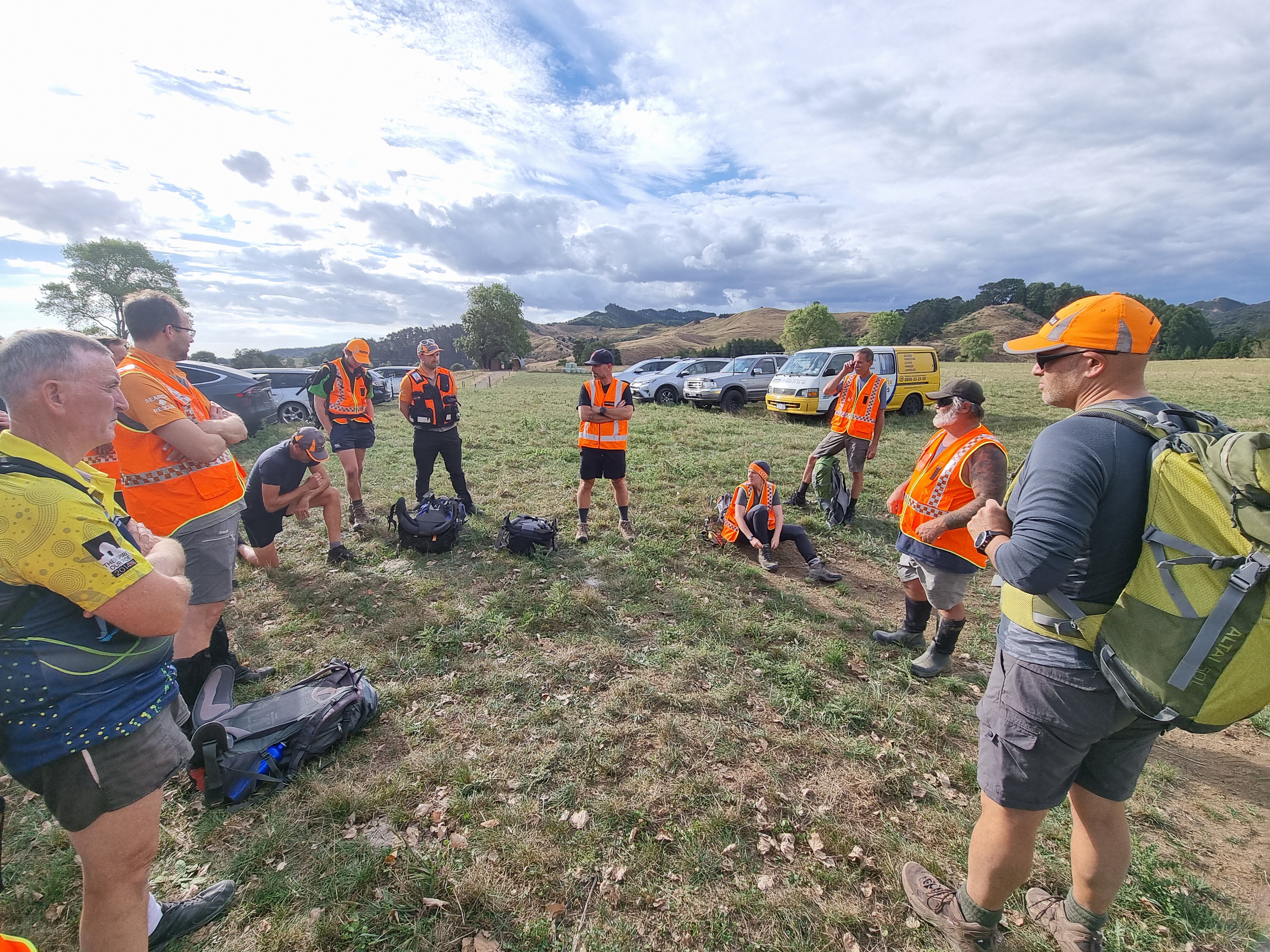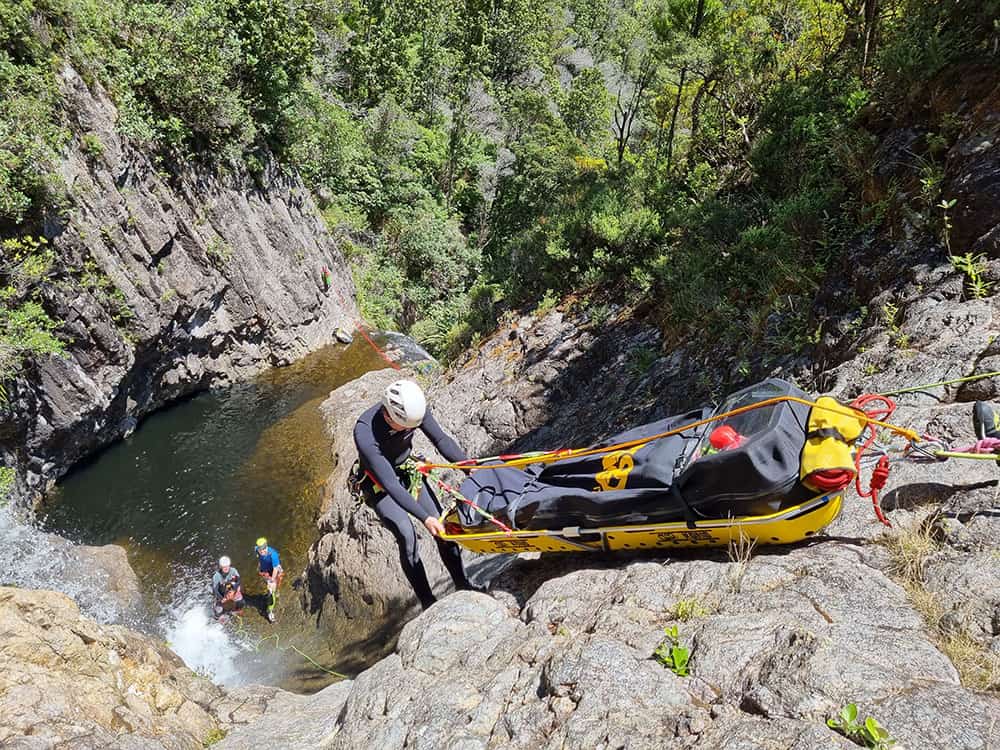Like the people being searched for, every search is different and unique. However, also like people, they usually have broadly the same anatomy and concepts. In this article, we provide a general overview of the structure of a search, the thinking, and the science going on behind the press conference (without all of the technical details and jargon.)
Search and rescue missions range from rescuing a person who is injured or not able to proceed (e.g. bluffed or cliffed out), persons who were expected at a location but failed to arrive on time, through those who are lost but have communications. In the big picture, SAR covers a very broad spectrum - simply stated: Locate, Assess, Stabilize, and Transport. This article will focus on the first (search) component of SAR, that is, finding someone whose location is unknown to the search team.
The Call Out
Calls to initiate a search come from a number of sources. They are often managed by local law enforcement. For PLBs (Personal Locator Beacons)/ InReach (Satellite communicator), mobile phone calls, the location is known, so will not be discussed in this article. Unknown location calls typically come from family or co-workers when the person is overdue from a trip or when there are concerns about their well- being e.g., a despondent (a depressed or suicidal person).

Reflex Tasks
A collection of “automatic” actions are initiated immediately. These include: investigation, containment, and hasty searches that can be executed with immediately available resources. The reporting person and others with potential information are quizzed for as much information as possible. When and where the missing person(s) was last seen, state of mind, experience, clothing, equipment, plans, medical conditions, familiarity with location and mode of travel, etc. This investigation runs in parallel to the search, and information is exchanged between the search and the investigation.
Informed by initial information, the goal of hasty searches is to quickly check areas of high probability and do not require extensive planning. Through conducting interviews with family and friends, determining the subject's likely direction of travel, last known location, and time last seen, hasty searches can be assigned to the most probable locations.
Planning
While the hasty teams are underway, the command-and-control center is set up. This is usually near the last known point the subject was definitely at, for example, the car at the trailhead. The investigation ramps up and the first operational period of search is planned.
During the reflex tasking search, planners will use information from the investigation such as the last confirmed location of the missing person, and the likely area that they will be in, given the terrain and how fast people can travel. Once these details are established, planners can adjust containment boundaries. They will identify the likely travel routes and attractions for the person, like a viewpoint. They will collate the information on what is known about the person's plans, like hunting or trail running. They will try to get information as to clothing and appearance to create a picture of the person. They use a combination of local knowledge, previous searches, and statistical data.
Lost Person Behavior is used by the search planning team to help guide the likelihood of where the missing subject will be. It has been crafted from the results of many countries' contributions to the International Search & Rescue Incident Database (ISRID) over decades. There are now over 50,000 searches and after each search, the contributing organizations fill in a detailed questionnaire to contribute data. A number of factors are programmed in, and guidance on likely types of locations and how far from the last known point they will be generated. A surprising number of missing persons will be found within a quarter mile (3-500m) from their last known point (LKP.)
At every phase of the search, any information received (e.g., clues, tracks, sightings, new information from the investigation, cell phone “pings”) is fed back to the planners and this is added to the known information; tactics are then adjusted as necessary. The searchers try to find signs or clues, and establish DNAT: the Direction of Travel, Numbers in the Party, the Age of the sign (to determine approximately how long since the person was there), and the Target - the likelihood that it is the target, such as a wallet with ID or a footprint matching one by the car the person left. The searchers are searching for signs, or clues, that the subject was there. If you are searching for that level of detail, and if you are near the subject, chances are you won't overlook them.
Operational Search
As team members arrive, they are organized into teams and assigned tasks. Teams range in size depending on the area and search techniques required. Upon completion of their assignment, they will report pertinent information and either return to base or be tasked to another activity. The information reported will include any clues found, the likelihood those clues are related to the subject, and the Probability of Detection (POD). This is the searchers' estimate of the likelihood that they will have found clues or the subject in the given search area.
Planners in the search management team use the results from each search of an area (segment) combined with signs and clues to adjust the probability that a subject is in an area. These adjusted statistics are used to inform decisions about where to send search teams in the next operational period.
SAR Tools and Techniques
There are a number of specialist tools and techniques used in searching. For searches, specially trained and certified dogs are used in scent-specific tracking of an individual, “friendly find” area search, and for the location of human remains. Search dogs cover large areas much faster than human line searchers and are often preferred if available. The use of helicopters and drones can help access difficult-to-reach spots, and thermal imaging can be used at night; however, this is less helpful in looking for deceased persons, those hiding, or under dense tree canopy.

Successful searches end when the missing person is located. They are suspended (or scaled down) when it is deemed unlikely that the missing person is in the area, or when search resources are exhausted.
Caveats
This article is intended as a generic overview of SAR operations globally, intended to offer those without SAR knowledge a glimpse behind the curtain of the press conference. There are many local variations and subtle and not-so-subtle differences between countries and localities. This is not intended as a treatise on land search management.
Additional Information
If you are interested in contributing to the SAR community have a look at our previous article. For a detailed review of a specific case and more in-depth information on some techniques, see this Wilderness & Environmental Medicine journal article.